String plants, also known as trailing or hanging plants, are a popular choice for indoor gardening due to their elegant appearance and easy maintenance.
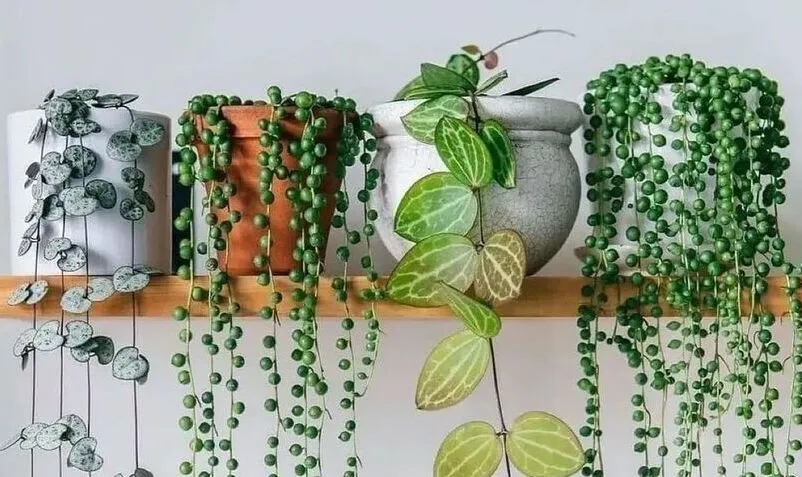
These plants are characterized by their thin, trailing stems that are adorned with small leaves, giving them a delicate and graceful look. String plants are great for hanging baskets or for decorating shelves and bookcases.
1. String of Pearls
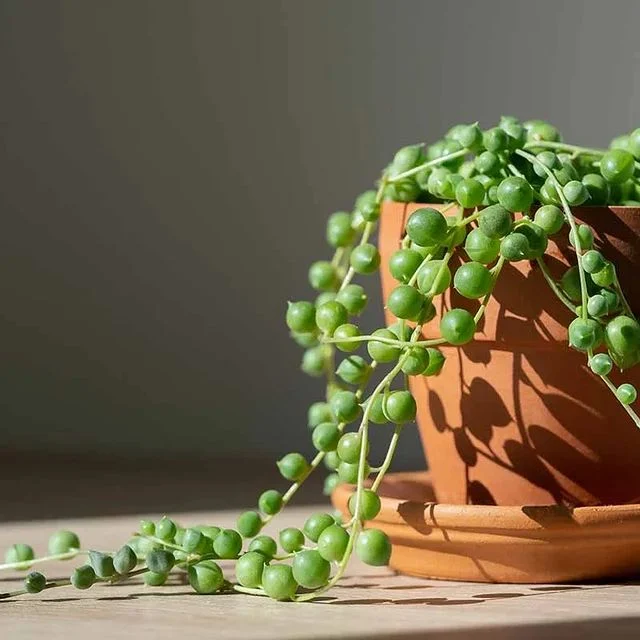
One of the most popular string plants is the String of Pearls (Senecio Rowleyanus). This plant features small, spherical leaves that resemble pearls and grow on thin, trailing stems.
The String of Pearls is a relatively easy plant to care for, as it requires bright, indirect sunlight and infrequent watering. This plant is a great addition to any home decor, and its unique appearance is sure to make it a conversation starter.
2. String of Hearts
Another popular string plant is the String of Hearts (Ceropegia Woodii). Its small, heart-shaped leaves grow on thin, wiry stems that can reach up to 12 feet in length.
The String of Hearts is also known as the “sweetheart vine” and is a popular gift for loved ones.
This plant demands bright, indirect sunlight and regular watering and is quite simple to care for. The String of Hearts is a great addition to any home decor and is sure to bring a touch of elegance to any room.
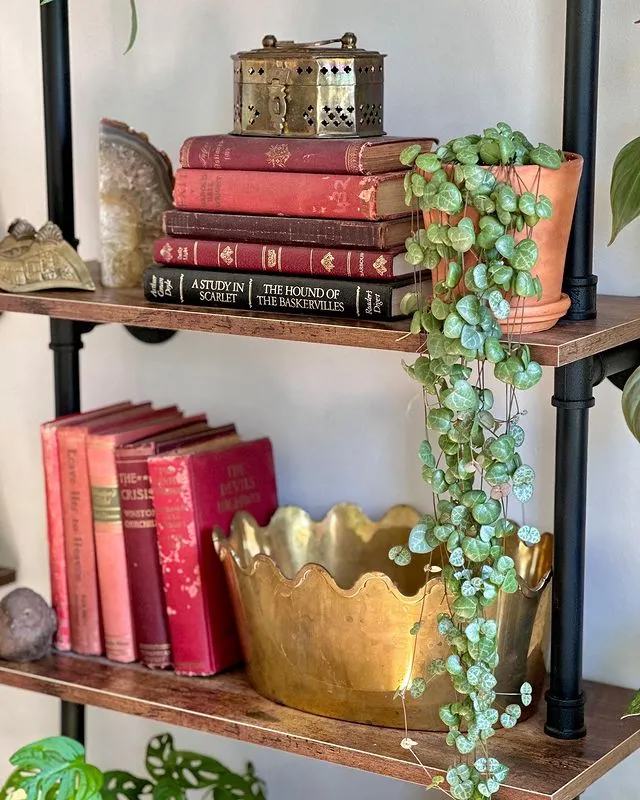
3. String of Bananas
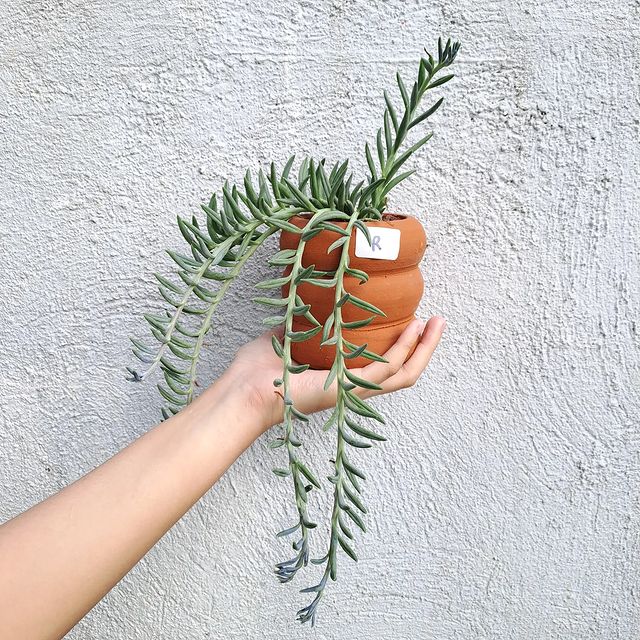
String of Bananas (Senecio Radicans) is another type of string plant that is easy to care for and adds a unique touch to any decor.
The “String of Bananas” is a succulent plant that’s native to South Africa. Its small, banana-shaped leaves grow on long, trailing stems that can reach up to 3 feet in length.
It prefers bright, indirect sunlight and infrequent watering, making it a popular choice for indoor gardeners.
The plant features small, curved leaves that resemble bananas and grow on thin, trailing stems. This plant is a great choice for beginners and is sure to bring a touch of the tropics to any indoor space.
4. String of Dolphins
String of Dolphins (Senecio Peregrinus) is a unique and interesting type of string plant that features small, dolphin-shaped leaves that grow on thin, trailing stems.
This plant prefers bright, indirect sunlight and well-draining soil. The String of Dolphins is a relatively easy plant to care for and is sure to add a touch of whimsy to any indoor decor.
Also read: Know-How to Propagate ‘String of Dolphins’
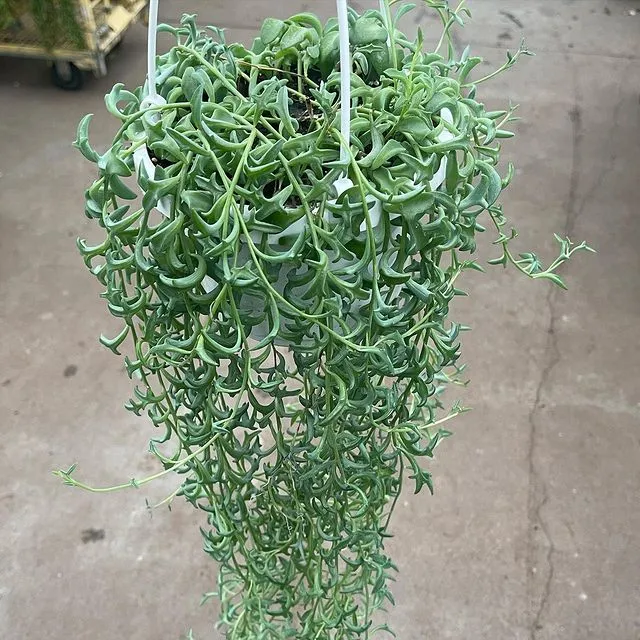
5. String of Turtles
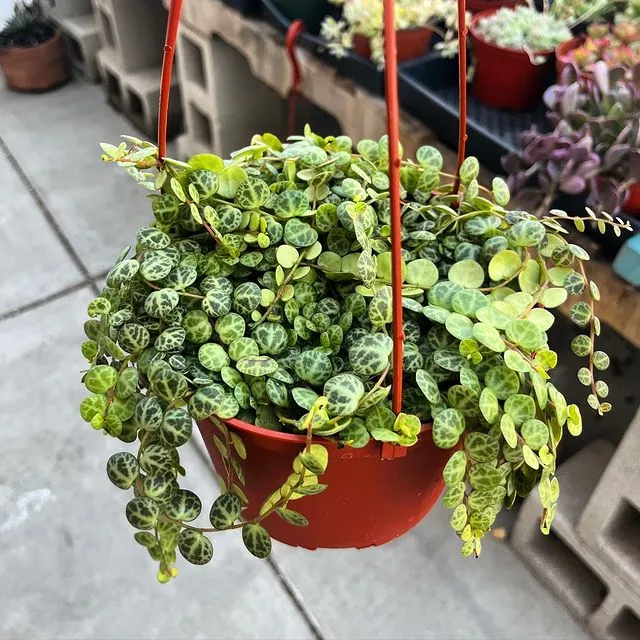
String of Turtles (Peperomia Prostrata) is a cute and charming type of string plant that features small, turtle-shaped leaves that grow on thin, trailing stems.
This plant prefers bright, indirect sunlight and well-draining soil. The String of Turtles is a great choice for small spaces and is sure to bring a smile to anyone’s face.
6. String of Nickels
String of Nickels (Dischidia Nummularia) is a unique and beautiful type of string plant that features small, round leaves that resemble nickels and grow on thin, trailing stems.
This plant prefers bright, indirect sunlight and well-draining soil. The String of Nickels is a great choice for adding a touch of elegance to any indoor space.

7. String of Rubies

String of Rubies (Othonna Capensis) is a unique and vibrant type of string plant that features small, ruby-colored leaves that grow on thin, trailing stems.
This plant prefers bright, indirect sunlight and well-draining soil. The String of Rubies is a great choice for adding a touch of color to any indoor space.
8. String of Watermelons
String of Watermelons (Cissus Discolor): The String of Watermelons is a member of the grape family and is native to Southeast Asia.
Its unique leaves have a dark green color with pink and silver patches that resemble the skin of a watermelon. It’s a relatively easy-to-care-for plant, requiring moderate watering and bright, indirect sunlight.
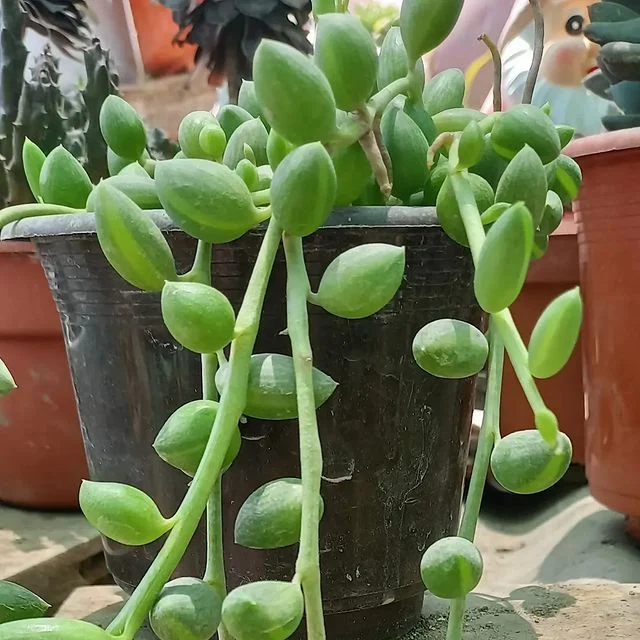
9. Burro’s Tail
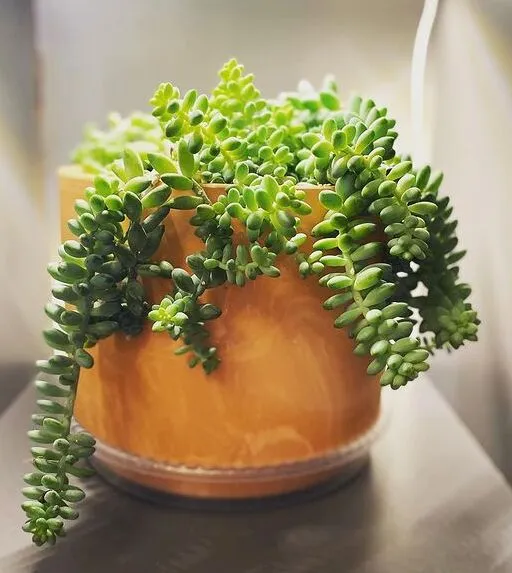
Burro’s Tail (Sedum Morganianum): Burro’s Tail is a succulent plant with long, trailing stems that can grow up to 3 feet in length. Its leaves are small and plump, resembling miniature bananas.
It prefers bright, indirect sunlight and infrequent watering, making it a low-maintenance choice for indoor gardeners.
10. String of Beetle
Beetle Peperomia (Peperomia griseoargentea) is a species of tropical perennial plant in the Piperaceae family. It is also known by other common names such as “Radiator Plant” and “Silverleaf Peperomia.”
The plant is native to South America and is popular as a houseplant due to its attractive foliage, which features silver-green leaves with unique markings that resemble the back of a beetle.
Beetle Peperomia is relatively easy to care for, making it a great choice for novice plant enthusiasts. It prefers bright, indirect light and well-draining soil.
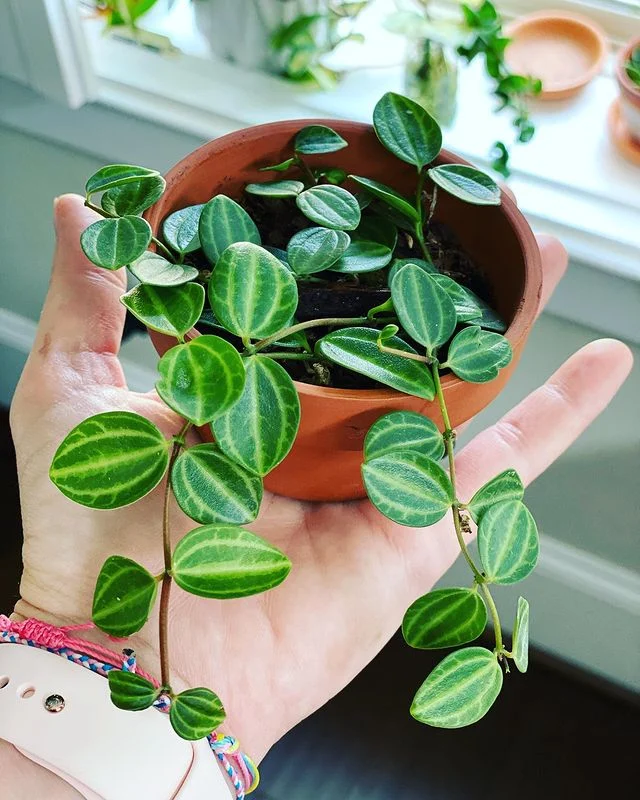
These are only a few sorts of the numerous string plant varieties available that may lend grace, beauty, and interest to any interior setting.
Whether you prefer the delicate leaves of the String of Hearts or the unique watermelon-like appearance of the String of Watermelons, there’s sure to be a string plant that’s perfect for you.
Also read: How to Recognize the Common Problems of String of Pearls and Solve Them?
Common Characteristics of String Plants
There are several common characteristics shared among the above-mentioned string plants, which include:
- Trailing Stems: All these plants have thin, trailing stems that grow horizontally or cascade downwards, making them ideal for hanging baskets or placing them on high shelves.
- Small Leaves: The leaves of these plants are relatively small, which makes them ideal for planting in small spaces or for creating a delicate and elegant appearance.
- Low-Maintenance: Most string plants are relatively easy to care for, requiring only bright, indirect sunlight and moderate watering. This makes them an excellent choice for beginners or for those who have limited time to care for plants.
- Variety of Leaf Shapes: Each of these plants has a unique leaf shape, ranging from spherical to heart-shaped to turtle-shaped, making them great for adding variety and interest to indoor decor.
- Drought Tolerance: Many of these plants have adaptations that allow them to tolerate periods of drought, such as storing water in their leaves or stems. This makes them an excellent choice for those who may forget to water their plants regularly.
Overall, string plants are an excellent choice for those looking for low-maintenance, visually appealing plants that can add a touch of elegance and interest to any indoor space.
FAQs
Q1: How often should I water my string plant?
Most string plants prefer to dry out between waterings, so it’s important to avoid overwatering. As a general rule, you should water your string plant once a week or when the soil is dry to the touch. However, it’s always best to check the specific care instructions for your particular plant.
Q2: Can I propagate my string plant?
Yes, many types of string plants can be easily propagated by taking stem cuttings and rooting them in water or moist soil. This can be a great way to create new plants or to help your existing plant grow fuller and longer.
Q3: What kind of soil should I use for my string plant?
Most string plants prefer a well-draining potting mix that’s high in perlite or sand. This helps to prevent overwatering and ensures that the plant’s roots have access to the nutrients they need to thrive.
Q4: Can I grow string plants outdoors?
It depends on the specific type of string plant and your climate. Many string plants are native to tropical or subtropical regions and may not do well in colder climates. However, some types of string plants can be grown outdoors in warmer climates or in protected areas, such as a covered patio or greenhouse.
Q5: Do string plants require a lot of sunlight?
Most string plants prefer bright, indirect sunlight, but can also tolerate lower light conditions. It’s important to avoid placing them in direct sunlight, as this can burn the leaves and cause them to wilt or turn brown. If you’re unsure about the lighting requirements for your particular string plant, it’s always best to check the care instructions or consult with a gardening expert.
